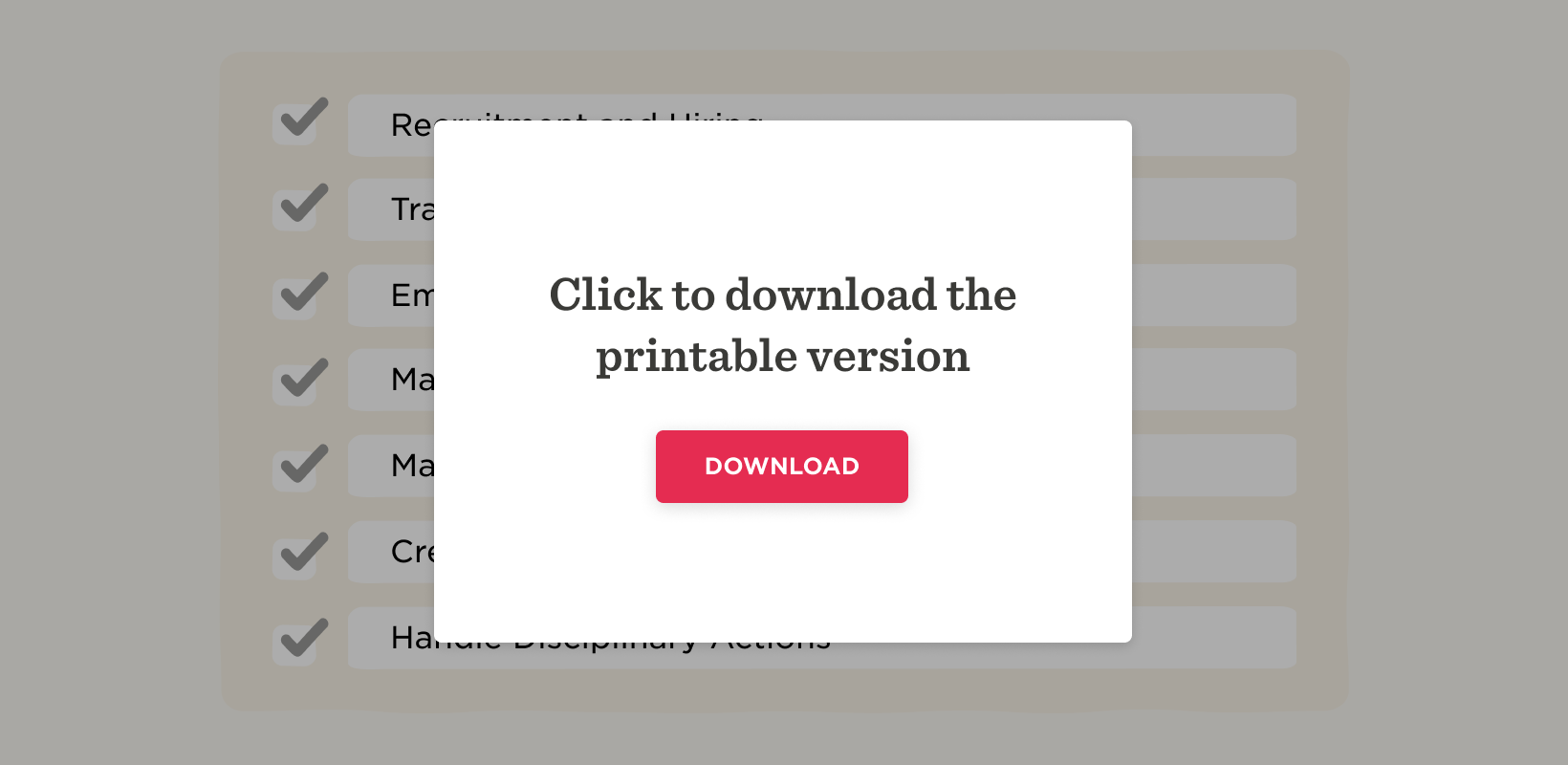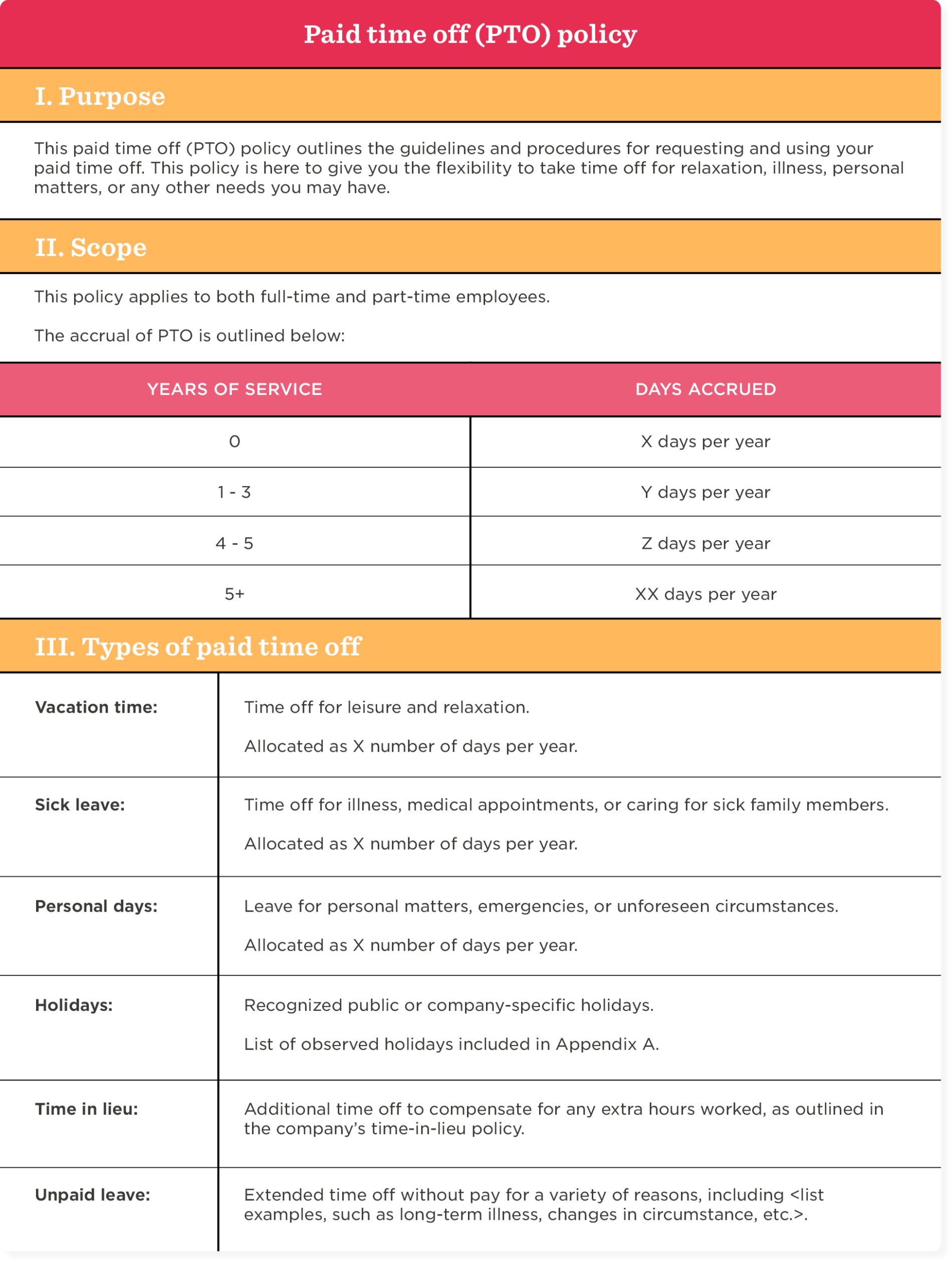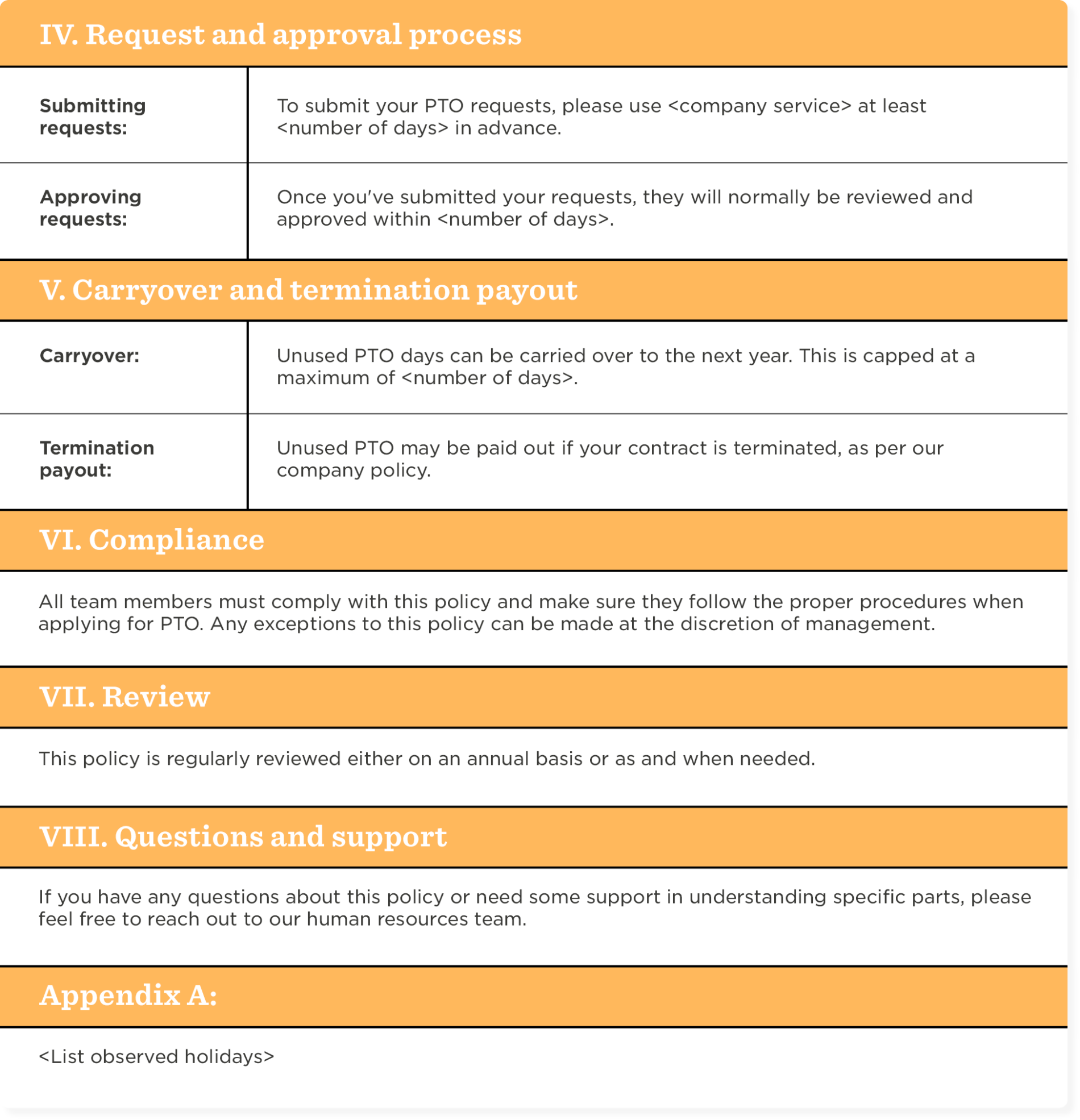In today’s fast-paced work environment, a comprehensive and clear paid time off (PTO) policy is indispensable.
Not only does this policy provide fairness and clarity throughout your workplace, it also ensures that your team are able to take some time to themselves to relax, recharge, and maintain a healthy work-life balance—all vital aspects of making sure your team’s mental and physical health is looked after.
In this guide, we’ll take you through the various aspects of a PTO policy, how they can help, and what they achieve. We’ll also provide you with a time off policy template to act as a kicking-off point for you to create your own policy.
<<Download this template and create a clear, comprehensive PTO policy today.>>
What is an employee PTO policy?
A PTO policy is a structured approach for managing and allocating time off for your team members. Unlike traditional leave policies that separate personal days, vacation, and sick leave, PTO groups these together to offer full flexibility in how your team members use their time off.
The PTO policy approach is widely used by a number of organizations due to its simplicity, flexibility, and ability to align with the diverse needs and lifestyles of the modern workforce.
But in order to be used to their full potential, PTOs need to be clear and communicated properly so that you can manage expectations and avoid any misunderstandings.
What are the benefits of a PTO policy?
A well-designed PTO policy can offer a wide range of benefits for you, your team members, and your organization as a whole. Here are some of the key benefits:
- Full flexibility. People appreciate the autonomy associated with PTO policies. Being able to decide how they use their time off without any strict rules gives a certain level of freedom. Whether it’s for a vacation, a personal day, or an unexpected injury or illness, a PTO policy allows people to use their time off as they see fit.
- Easier management. Organizations and HR professionals find PTOs far easier to track and manage as all of their team’s leave is categorized under one umbrella. Having everything in one place allows you to streamline your administration, saving time and reducing potential admin mistakes.
- Enhanced wellbeing. Having access to regular time off can significantly boost your team’s morale and productivity, whilst also reducing the chance of burnout. When your team has access to time away from work, it encourages a healthier work-life balance and allows them to recharge—which can ultimately lead to increased creativity and engagement in their day-to-day work.
- Attractive perk. With the job market being highly competitive, a generous PTO policy can be the tipping point for hiring potential talent. It shows that your organization is committed to its team members’ wellbeing and can set you apart from other competing firms.
Types of PTO to include in your policy
When drafting a PTO policy, there are several types of leaves of absence that you need to consider. Each type serves a distinct purpose and helps to contribute to a balanced and supportive work environment.
- Vacation. Who doesn’t love a good vacation? Vacation days are paid days off for leisure and relaxation. Encouraging your team members to take regular vacations helps to foster wellbeing and creativity, allowing your people to return refreshed and focused.
- Sick leave. Looking after your health is important. Sick leave allows people to take time off for any illnesses or medical appointments. This allows your team to take care of any health issues without having to stress about their work commitments. It also reduces the chance of illnesses spreading at the workplace by discouraging sick team members from coming into the office.
- Personal days. From taking time off to move to a new home to taking a mental health day, personal days give people a certain level of flexibility to manage their personal lives.
- Holidays. Throughout the year, there are a number of public or company-specific holidays. As an HR professional, it’s important to recognize all regional, cultural, and religious holidays. This helps to ensure you’re reflecting—and respecting—the diversity of your workforce. It also helps to make sure you’re adhering to regulations.
- Time in lieu. When a team member has worked extra hours, they can be offered that time back in compensatory time off instead of monetary compensation. This time in lieu tends to be applied for more informal situations, such as compensation for working just an hour or two of overtime.
- Unpaid leave. There are times when your team members need to take time off but either don’t have any paid time off left or need to take longer leaves of absence. In such cases they can take unpaid leave. This can be used for long-term illnesses, changes in circumstances, and a number of other reasons.

How to pick a PTO policy for your business
Choosing the right PTO policy for your organization requires a thoughtful approach. You need to consider a number of things that are specific to your company, as picking the wrong policy can have far-reaching effects.
Here are the steps you can consider:
- Assess your needs. It’s important to understand the specific needs of your organization and your team members. You can get a good understanding by surveying the team to gauge any concerns and expectations, allowing you to tailor your policy to reflect your team’s interests and needs and make sure they align with the organization’s needs.
- Check legalities. Make sure that your PTO policy aligns with both state and federal laws. This can be done by consulting legal experts or contacting the relevant governmental bodies.
- Set a benchmark. You can set your policy’s benchmark by comparing it with competitors and industry norms. This gives you a deeper look into what it actually is that you’re offering and how it differs from the norm.
- Consider your goals. It’s important to align your policy with your organization’s goals, culture, and long-term vision. A good PTO policy will reflect your organization’s core values, helping to foster a harmonious culture that supports both individual growth and collective success.
- Review regularly. As with any company policy, it’s important to make sure your PTO policy evolves alongside your organization. This will ensure that it stays relevant, effective, and in your people’s best interests.
By considering all of these factors, you can tailor a PTO policy that hits the right balance between meeting the diverse needs of your team members and furthering the strategic goals of your business.
PTO policy template
Here is our sample of PTO policies that you can tailor to fit your needs. We created our PTO policy template with the traditional, separated leave types in mind.


Remember, every company is unique. While PTO policy examples can provide a foundation, you should tailor them to fit your team’s and your organization’s specific needs.
Recommended For Further Reading
Best practices for a PTO policy
When creating and distributing your PTO policy, there are a few best practices that are good to stick to:
- Transparency. Your policy should be clear, concise, and leave no room for misunderstanding. It should also be fully and readily accessible to all of your team members.
- Flexibility. Consider offering flexible options to fit the unique needs of your team members. This enhances your policy and allows for a solution that fits everyone.
- Clear communication. Ensure your team fully understands the policy by providing training or including an explanation in your onboarding process.
<<Download this template and create a clear, comprehensive PTO policy today.>>
Automate attendance management with Bob
At HiBob, we’ve built a modern HR platform that goes beyond conventional solutions, addressing all of today’s business needs—including attendance management. Bob offers a one-stop solution for automating attendance tracking and is customizable to your organization’s requirements.
For HR, Bob streamlines the management of attendance, centralizing data in a user-friendly environment. Managers can access real-time insights on attendance, improving oversight.
So, let Bob automate your attendance management and drive productivity and engagement within your organization.
